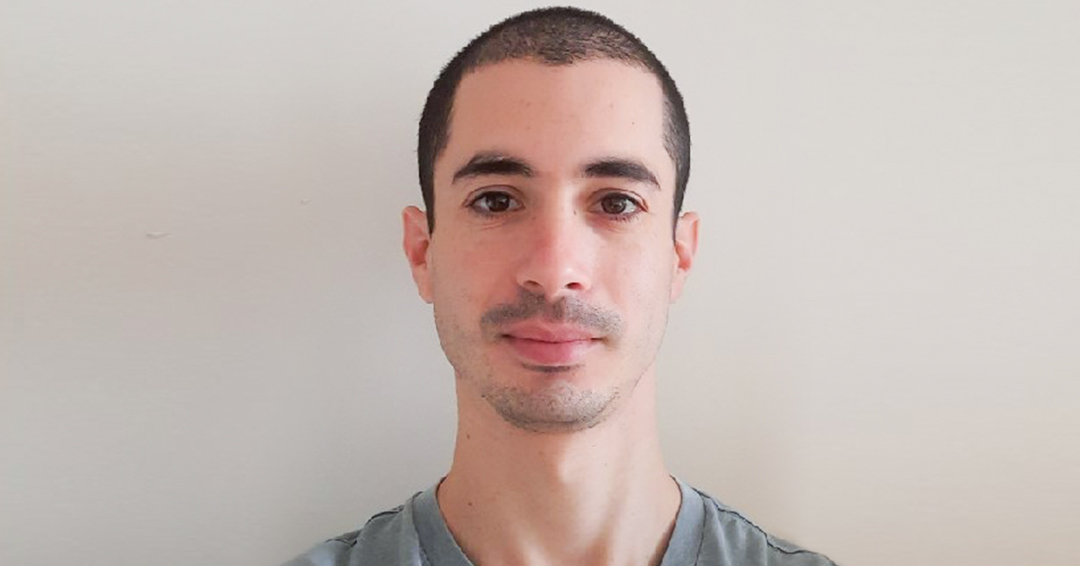
Itai Sharon, PhD, who last year completed his doctoral degree in biochemistry as part of the lab of Martin Schmeing, PhD, James McGill Professor in the Department of Biochemistry, has won the G. Michael Bancroft PhD Thesis Award from Canadian Light Source (CLS). It’s the second time his dissertation – which explores a nitrogen-storing bacterial polymer called cyanophycin with wide biotech potential – has been singled out for praise. Earlier this year, Sharon won the Biophysical Society of Canada’s Doctoral Thesis Award. We caught up with Sharon, now doing a postdoc in Switzerland, to get the lowdown on his research and find out what he’s up to now.
How did you feel when you heard you had won a second award for your dissertation?
This was very exciting and a great honour, especially because it was awarded by the CLS, which I used extensively during my studies and which facilitated large parts of my research. To have the value of my work recognized by the people at the CLS means a lot to me.
Why do you think your dissertation keeps winning prizes?
I think the thesis presents a complete story. It is focused on a well-defined subject – the metabolism of cyanophycin, which is a widespread natural biopolymer produced by many different bacteria. Since it is rich in nitrogen and is chemically unreactive, cells use it to store nitrogen. Because it’s so useful for microorganisms and is so common, we believe this polymer has important environmental roles. The thesis presents structures of the enzymes that are involved in all four metabolic steps involved in the biosynthesis and biodegradation of this polymer and explains how they work. As a result, it is able to present a full picture of cyanophycin metabolism.
How does your work add to what was already known about cyanophycin metabolism?
Most of the enzymes that are involved in cyanophycin metabolism have been known for years or even decades. However, important questions about their activity and structures were unknown. For example, it wasn’t clear what the enzymes CphA1 and CphA2, which are involved in the polymer’s biosynthesis and biodegradation, look like, let alone how they function. My research presented structures of these enzymes bound to their various substrates, which allowed us to understand how they work.
What led you to explore this question?
We started by investigating CphA1, as it was the biggest and most glaring hole in our scientific knowledge. CphA1 was extensively investigated for biotechnological reasons – it can be used to make cyanophycin on a commercial scale, which is desirable for multiple applications. However, because it wasn’t known what CphA1 looks like or how it works, many studies found it difficult to bioengineer this enzyme to make it more useful. We believed that by answering these questions we would be able to support those efforts.
What are the practical implications?
Cyanophycin can be used as a source for several materials, such as the biodegradable polymer poly-Asp, which is used as a water softener, soper-swelling material and a biodegradable plastic alternativeCyanophycin is not only biodegradable, but can also be synthetized in genetically modified organisms such as bacteria and plants. This makes it a cleaner source for these materials, and consequently many research groups attempted to optimize its production. By showing how the enzymes that make this polymer work, these attempts now have the tools to make rational variations in CphA1 and the ways it is used, which will speed up the process of making cyanophycin production cheap and simple.
Why did you choose to pursue this research at McGill?
I came here because I wanted to join Prof. Schmeing’s lab. His research is focused on studying the structures of big and complex enzymes using a variety of advanced methods. I wanted to learn more about this field of research and learn the approaches that the lab utilizes in order to tackle challenging questions in structural biology.
What are you up to now? Is there more cyanophycin in your future?
Following my graduation from McGill, I moved to Switzerland where I am doing a postdoc at the University of Zurich. While I work on different biological systems here, the knowledge from my PhD is proving to be very useful and is helping my current research.
As for cyanophycin, I believe there is still a lot to be uncovered about the ways bacteria use it. There are many different cyanophycin-metabolising bacteria, and we have reasons to believe that some of them use it for more than just nitrogen storage. I didn’t have time to fully investigate these research directions during my PhD, but I hope that some day we will discover more about the ecological significance of this polymer.
Before we let you go, any shout outs?
Yes! I worked with many lab members over the years, and learned a lot from all of them. Prof. Schmeing was also a wonderful supervisor, and encouraged me to ask more research questions and explore the field of cyanophycin research. These factors combined to create a great working environment, and I feel lucky to have had the chance to study there.
Related:
Itai Sharon, Structural insights into the biosynthesis and biodegradation of cyanophycin (PhD dissertation)
